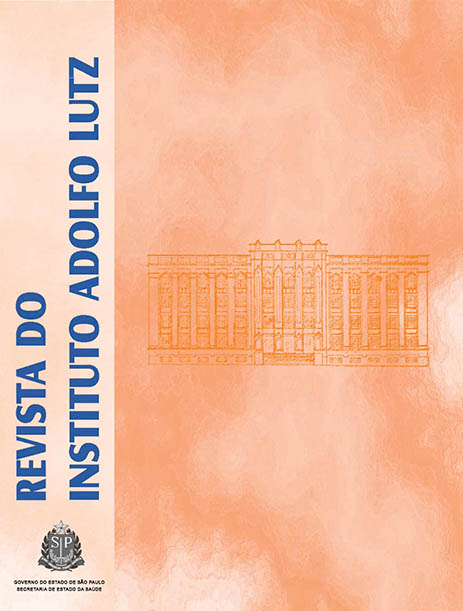Abstract
Vitamin A deficiency has been characterized as a public health issue in developing countries. Otherwise, an intake of large doses of vitamin A may cause toxic and teratogenic effects. This study analyzed the effect of freezing procedure on the retinol contents in quail liver by means of high performance liquid chromatography (CLAE). It was also evaluated the contribution to dietary intake in children ranging from 1 to 8 years old, men and women. The average contents of retinol found in the fresh and frozen samples were 6145.7 μg/100g and 5105.5 μg/100g, respectively. The freezing process on the liver caused a significant reduction on retinol contents, with a loss of 17%. Concerning the retinol dietary reference intakes (DRI) for children from 1 to 3 years old and from 4 to 8 years old, one quail liver, which is equivalent to 6 g. provides 123% and 92% of retinol, respectively, showing that the consumption of one quail liver exceeds the limits of daily intake in children from 1 to 3 years old. In adults, the quail liver provides 41% of the required amount to men and 52% to women. This product shows to be a suitable source of vitamin A.
References
1. Mahan LK, Escott-Stump S. Krause: Alimentos, nutrição e dietoterapia, 8ª ed., São Paulo: Ed. Roca; 1998.
2. Dimenstein R, Nascimento THCR, Melo ILP, Ribeiro KDS. Avaliação dos níveis de retinol no colostro humano e sua relação com o estado nutricional materno em vitamina A. Rev Bras Med. 2006;65(5):206-10.
3. Geraldo RRC, Paiva SAR, Pitas AMCS, Godoy I, Campana AO. Distribuição da hipovitaminose A no Brasil nas últimas quatro décadas: ingestão alimentar, sinais clínicos e dados bioquímicos. Rev Nutr. 2003;16(4):443-60.
4. Sarni RS, Kochi C, Ramalho RA, Schoeps DO, Sato K, Mattoso LCQ et al. Vitamina A: nível sérico e ingestão dietética em crianças e adolescentes com déficit estatural de causa não hormonal. Rev Assoc Med Bras. 2002;48(1):48-53.
5. Vliet TV, Boelsma E, Vries AJ, Berg HVD. Retinoic acid metabolities in plasma are higher after intake of liver paste compared with a vitamin A supplement in women. J Nutr. 2001;131:3197-203.
6. Organização Mundial da Saúde. Vitamina A na gestação e na lactação: recomendações e relatório de uma consultoria. Recife: A Organização; 2001.
7. Majchrzak D, Fabian E, Elmadfa I. Vitamin A content (retinol and retinyl esters) in livers of different animals. Food Chem. 2005;98(4):704-10.
8. Institute of Medicine. Dietary reference intakes for vitamin A, vitamin K, arsenic, boron, chromium, cooper, iodine, iron, manganase, molybdenum, nickel, silicon, vanadium, and zinc. Washington, DC: National Academy Press; 2001.
9. Karadas F, Surai PF, Sparks NHC, Grammenids E. Effects of maternal dietary supplementation with three sources of carotenoids on the retinyl esters of egg yolk and developing quail liver. Comp Biochem Physiol. 2005;140(4):430-5.
10. National Research Council. Nutrients requeriments of poultry. Washington DC: National Academy of Sciences; 1994.
11. Gebre-Medhin M, Vahlquist, A. Vitamin A Nutrition in the Human Fetus: a comparation in Sweden and Ethiopia. Acta Pediatr Scand. 1984;73:333-40.
12. Nierenberg DW, Nann SL. A method for determining concentration of retinol, tocopherol, and five carotenoids in human plasma and tissue samples. Am J Clin Nutr. 1992;56:417-26.
13. Vidal-Valverde C, Ruiz R, Medrano A. Stability of retinol in milk during frozen and other storage conditions. Eur Food Res Technol. 1992;6:562-5.
14. USDA. National Nutrient Database for Standard Reference, Release 19 2007. [acesso 08 fev 2007]. Disponível em: [http://www.nal.usda.gov/fnic/foodcomp/cgi-bin/list_nut_edit.pl].
15. TACO-Tabela Brasileira de Composição de Alimentos/NEPA – UNICAMP-Versão II. Campinas: NEPA-UNICAMP; 2006.

This work is licensed under a Creative Commons Attribution 4.0 International License.
Copyright (c) 2011 Instituto Adolfo Lutz Journal
